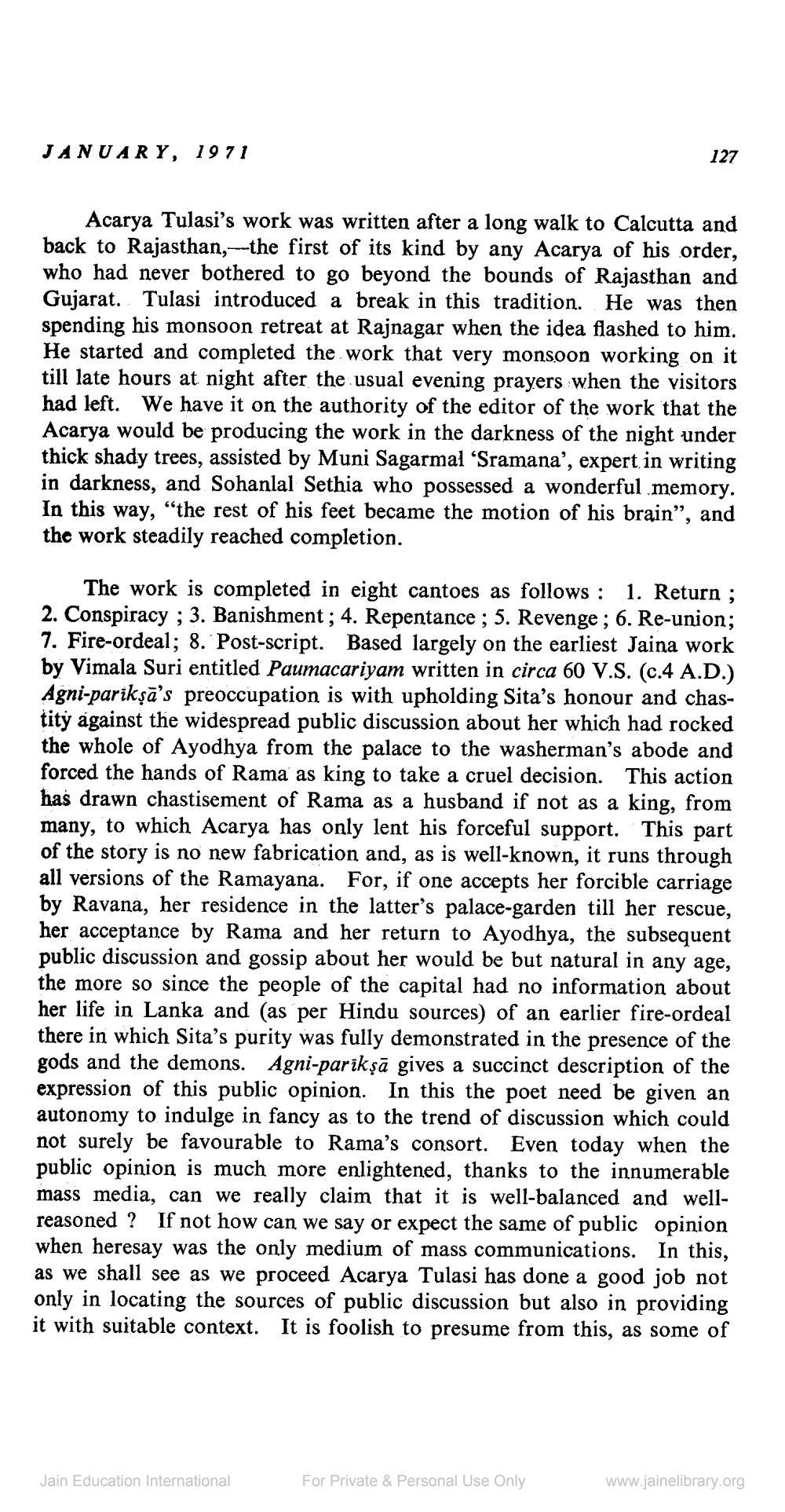________________
JANUARY, 1971
127
Acarya Tulasi's work was written after a long walk to Calcutta and back to Rajasthan,--the first of its kind by any Acarya of his order, who had never bothered to go beyond the bounds of Rajasthan and Gujarat. Tulasi introduced a break in this tradition. He was then spending his monsoon retreat at Rajnagar when the idea flashed to him. He started and completed the work that very monsoon working on it till late hours at night after the usual evening prayers when the visitors had left. We have it on the authority of the editor of the work that the Acarya would be producing the work in the darkness of the night under thick shady trees, assisted by Muni Sagarmal ‘Sramana', expert in writing in darkness, and Sohanlal Sethia who possessed a wonderful memory. In this way, “the rest of his feet became the motion of his brain”, and the work steadily reached completion.
The work is completed in eight cantoes as follows : 1. Return; 2. Conspiracy ; 3. Banishment; 4. Repentance ; 5. Revenge ; 6. Re-union; 7. Fire-ordeal; 8. Post-script. Based largely on the earliest Jaina work by Vimala Suri entitled Paumacariyam written in circa 60 V.S. (c.4 A.D.) Agni-pariksā's preoccupation is with upholding Sita's honour and chastity against the widespread public discussion about her which had rocked the whole of Ayodhya from the palace to the washerman's abode and forced the hands of Rama as king to take a cruel decision. This action has drawn chastisement of Rama as a husband if not as a king, from many, to which Acarya has only lent his forceful support. This part of the story is no new fabrication and, as is well-known, it runs through all versions of the Ramayana. For, if one accepts her forcible carriage by Ravana, her residence in the latter's palace-garden till her rescue, her acceptance by Rama and her return to Ayodhya, the subsequent public discussion and gossip about her would be but natural in any age, the more so since the people of the capital had no information about her life in Lanka and (as per Hindu sources) of an earlier fire-ordeal there in which Sita's purity was fully demonstrated in the presence of the gods and the demons. Agni-parikşā gives a succinct description of the expression of this public opinion. In this the poet need be given an autonomy to indulge in fancy as to the trend of discussion which could not surely be favourable to Rama's consort. Even today when the public opinion is much more enlightened, thanks to the innumerable mass media, can we really claim that it is well-balanced and wellreasoned ? If not how can we say or expect the same of public opinion when heresay was the only medium of mass communications. In this, as we shall see as we proceed Acarya Tulasi has done a good job not only in locating the sources of public discussion but also in providing it with suitable context. It is foolish to presume from this, as some of
Jain Education International
For Private & Personal Use Only
www.jainelibrary.org




